#MDA20009/2021
Explore tagged Tumblr posts
Text
When Fandoms turn Fatal
MDA20009 Digital Communities │ Week 9: Fandom and Fan Communities
We’ve all found ourselves obsessing over a particular topic, person, or band at some point in our lives. But diving into a fandom is a different level of fan obsession. Fandoms can be a great way to connect with a community of people who share your love for a certain music artist, actor, or game. While many fandoms are positive and supportive, it’s not uncommon for them to turn toxic. Today, however, I want to explore the darker side of obsession and the dangers it can bring, while also being mindful and sensitive as possible.
Try not to trigger a community challenge

The Case of Björk: Obsession Unleashed

In 1996, the Icelandic musician Björk had been faultlessly targeted by Ricardo López, a man who had never met her in actual life but instead became a crazy fan. Saddled with more than just personal problems and lurking depression, López chronicled his descent into madness in a series of videotapes that eventually came together into an ominous design to harm Björk (tauujungnya, 2024).
López believed that Björk had "destroyed" his life, and like the rest of the twisted mind in his head, he saw himself as a victim of her fame. Lopez's breaking point came when the news came out that Björk was with musician Goldie, a source of frustration for Lopez that he began meticulously planning his murder of her to describe his growing, rising frustration and sense of betrayal. His obsession progressed, tracking where she went, sending a bomb to her London home, which, luckily, never reached her because the authorities stopped it, and, unfortunately, López left the world by taking his life, leaving 11 two-hour tapes of footage exposing his obsession (Staff, 2021).
This case is an unforgettable reminder of how passion can quickly escalate into madness. Björk, who had experienced more than most, had also been forced to confront the reality that celebrity breeds fan obsession: in the case of many fans, the distinctions between fandom and obsession could blur, and the consequences could be haunting.
John Lennon: A Fan’s Fatal Infatuation

A similar case of fatal fandom occurred in 1980 when ex-Beatle John Lennon was murdered by Mark David Chapman outside his apartment in New York City. Chapman had long been an admirer of Lennon but soon became obsessed with the musician. Eventually, that admiration turned into antipathy and craziness.
The novel The Catcher in the Rye greatly impacted Chapman; he said Lennon represented all that he considered repugnant in society, and his motive was driven, in his own words, to "promote the reading of The Catcher in the Rye." Eventually, the obsession began to build until Chapman determined he wanted to meet Lennon to earn himself a guaranteed place in the history books by "taking him out" (Mulroy, 2023).
On that evening of December 8, 1980, Chapman approached Lennon and attempted to request his autograph. The episode would go on to culminate fatally when Chapman shot him dead. That event killed one of the most eminent figures in the music world of the 20th century. The whole world had to come to terms with reality, and there were awkward questions concerning the more sordid realities of fandom and celebrity worship (Mulroy, 2023).
The Psychology of Fatal Fandoms
Through Björk and John Lennon, the evil consequences of unhealthy fan behaviours can easily be seen, commonly rooted in the one-sided emotional ties of fans with celebrities. These ties may create a feeling of entitlement over the celebrity's attention or disappointment in cases where expectations from them don't match reality. Intense cases such as those claims of López and Chapman invade reality and give way to violent fiasco even when guilt plays according to the picture of a mental health disease like depression or psychosis. Without proper intervention or support, these feelings can fester and manifest in dangerous ways, as seen in both the Björk and Lennon cases.
The Role of Media and Online Spaces
Media coverage of celebrities can lead to toxic fandoms and even push people toward compulsive behaviour since it exalts them and piques their curiosity about their personal lives. Social media only worsens it, producing echo chambers that allow harmful fan behaviour to go unchecked. Twitter and TikTok are often the playgrounds where the lines between admiration and obsession are thinly blurred, even enabling acts of harassment and stalking.
A Call for Responsibility
Fandoms could be an influential source of joy and connection but could also have toxic dynamics within themselves if kept unchecked. Björk's tragedy and the passing of Lennon exemplify the need for such healthier boundaries. While the fans have respect for personal limits, celebrities and the media sometimes draw boundaries of their own without being aware of what creates fan culture. Social media must also take a more active stand against toxic behaviours to ensure that fandoms stay safe spaces for expression and not breeding places of dangerous obsessions.
List of references:
Mulroy, C. (2023, December 8). How did John Lennon die? This is who killed the famed Beatles musician 43 years ago. USA TODAY. https://www.usatoday.com/story/entertainment/music/2023/12/08/who-killed-john-lennon/71817101007/
Staff. (2023, January 27). The terrifying moment Björk’s stalker tried to kill her with an acid letterbomb. Far Out Magazine. https://faroutmagazine.co.uk/bjork-stalker-acid-letterbomb-ricardo-lopez/
Tauujungnya. (2024, November 20). Bjork Stalker: The Unsettling Story Behind The Iconic Singer's Harrowing Experience. Social Media Sensations. https://www.survivalresources.com/topnews7/bjork-stalker.html
8 notes
·
View notes
Text
Are Media Representations of Fans Fair? Experience of Fandom
#Week9 #MDA20009
Introduction
In a world where media dominates our lives, it's essential to reflect on how it portrays fans. Are the common depictions of fans as 'weird and 'overly emotional' fair, or are they merely stereotypes? In this blog post, we'll explore these stereotypes and discuss my own personal experience with fandom.
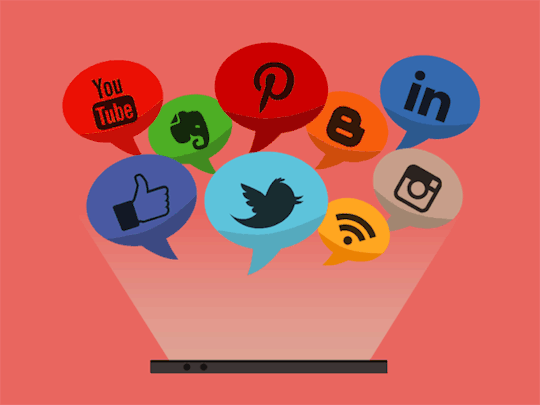
Section 1: Media Stereotypes of Fans
Media's Lens on Fandom
The media often portrays fans in a rather unflattering light. Think about TV shows where obsessive fans depicted as socially awkward or news sentimental that sensationalize fan reactions. These portrayals perpetuate stereotypes, making it seem like fandom is a realm of eccentricity (Fuschillo 2020).
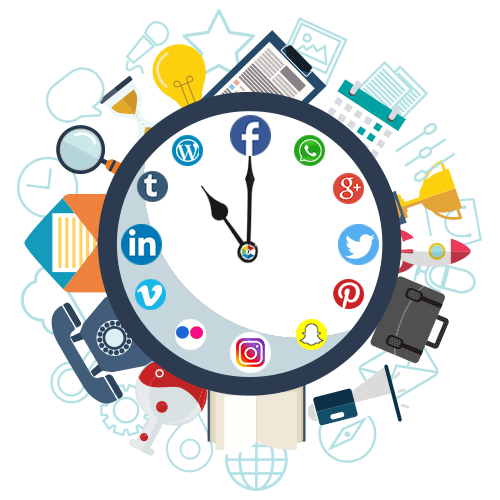
Examples of Stereotypes
Consider instances in movies and television where fans are caricatured as fanatics, and their passion is ridiculed. The classic portrayal of a fan living in their parents' basement, surrounded by merchandise, and socially isolated is a stereotype that has been perpetuated for decades. News reports during major fan events might focus solely on 'crazed' fans, ignoring the diverse and passionate community that these events bring together (Fiske 2017).
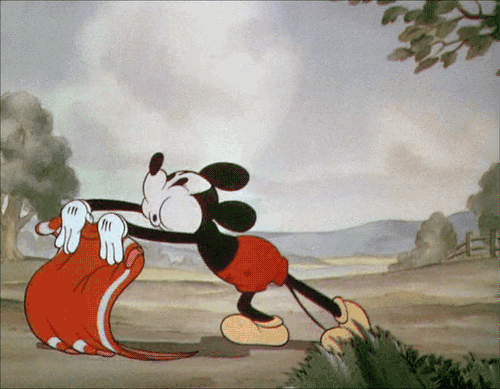
The Impact of Stereotypes
These media stereotypes can be damaging. they contribute toa misconception that fandom is something to be ashamed of or that fans are somehow less 'normal'. This misrepresentation can lead to stigmatization and exclusion, making it challenging for individuals to express their passion openly (Stewart et.al 2021).
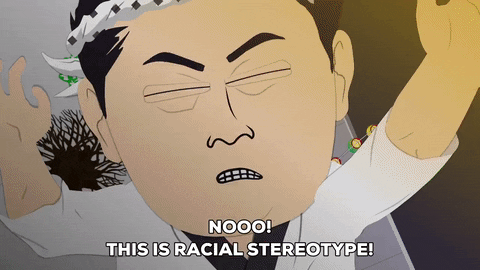
Section 2: Challenging the Stereotypes
Breaking the Mold
Thankfully, fans have been challenged these stereotypes, and they've been doing so in remarkable ways. They're actively disproving the misconception that the media perpetuates by showcasing their creativity, social activism, and positivity.
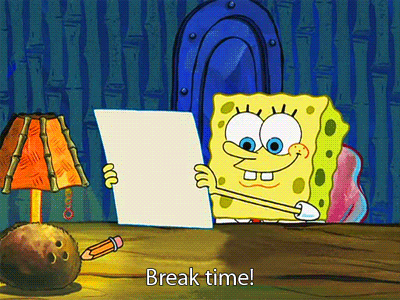
Fan Communities Making a Difference
One of the most powerful ways fans have challenged these stereotypes is by making a positive impact. For communities often 2come together for charitable causes. They organize fundraisers, donate to worthy charities, and use their shared love for a franchise or show to make a real-world difference. For example, "fandom charities" have raised millions of dollars for causes like disaster relief, children's hospitals, and environmental conservation (Mastromartino & Zhang 2020).
Campaigns organized by fans have also raised awareness for important causes. Whether it's advocating for social justice, raising awareness about a mental health issues, or supposedly LGBTQ+ rights, fan communities have been at the forefront of many meaningful campaigns. This leverage their passion and influence to bring about positive change.
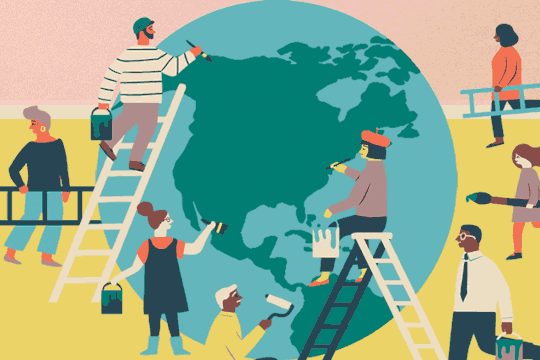
Section 3: My Personal Fandom Experience
My Fandom Journey
My own journey as a fan has been nothing short of transformative. I fell in love with a particular show that resonates with me on a deep level. This show became more than just a form of entertainment, it was a source of inspiration, comfort, and a gateway to a whole new world of creativity.

Connections and Creative Expression
Being part of a fan community allowed me to connect with like-minded individuals who shared my passion. We discussed theories, analysed characters, and celebrated the show's milestone together. The sense of belonging within a community was a beautiful aspect of fandom.
Creativity played a significant role in my fandom experience. I started creating fan art, within fanfiction, and even participating in fan conventions. It was a way to express my love for the show and connect with others who felt the same way. The creative outlet that fandom provided was *incredibly fulfilling.
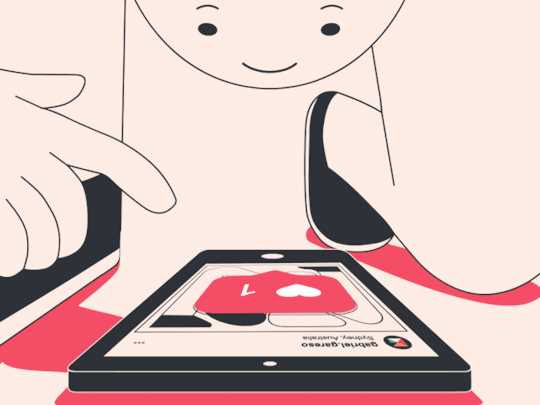
Section 4: The Diversity of Fandom
Fan Communities Are Diverse
One of the most significant misconceptions perpetuated by the media is the idea that fans are a monolithic group. In reality, fan communities are incredibly diverse. Fans come from all walks of life, and their passion can be a source of empowerment and identity.
Fandom is an inclusive space where people of different backgrounds, age, gender, and cultures come together over shared interests. This diversity adds depth and richness to fan communities, it's a place where you can find acceptance and understanding, ni matter who you are or where you come from (Cristofari & Guitton 2016).

References
Cristofari, C & Guitton, MJ 2016, 'Aca-fans and fan communities: An operative framework', Journal of Consumer Culture, vol. 17, no. 3, viewed 7 November 2023, <https://journals.sagepub.com/doi/10.1177/1469540515623608>.
Fiske, ST 2017, 'Prejudices in cultural contexts: shared stereotypes (gender, age) versus variable stereotypes (race, ethnicity, religion)', Perspect Psychol Sci, vol. 12, no. 5, viewed 7 November 2023, <https://www.ncbi.nlm.nih.gov/pmc/articles/PMC5657003/>.
Fuschillo, G 2020, 'Fans, fandoms, or fanaticism?', Journal of Consumer Culture, vol. 20, no. 3, viewed 7 November 2023, <https://www.researchgate.net/publication/322273679_Fans_Fandoms_or_Fanaticism>.
Mastromartino, B & Zhang, JJ 2020, 'Affective outcomes of membership in a sport fan community', Frontiers in Psychology, 8 May, viewed 7 November 2023, <https://www.ncbi.nlm.nih.gov/pmc/articles/PMC7225319/>.
Stewart, R, Wright, B, Smith, L, Roberts, S & Russel, N 2021, 'Gendered stereotypes and norms: a systematic review of interventions designed to shift attitudes and behaviour', Heliyon, vol. 7, no. 4, viewed 7 November 2023, <https://www.ncbi.nlm.nih.gov/pmc/articles/PMC8066375/>.
4 notes
·
View notes
Text
Week 12: Crowdsourcing in Times of Crisis
Hello everyone, and welcome back to my Tumblr blog. Today we will discuss Crowdsourcing in Times of Crisis.

When a crisis hits, whether it be an earthquake, flood, or wildfire, the conventional systems we rely on can break down fast. The digital analogue of “many hands make light work” is crowdsourcing.
Although the term may seem like some tech bro buzzword, it has been used since the 1700s. One of the first instances of crowdsourcing innovation was when the British government’s incentive for anyone who could figure out how to calculate longitude. However, it is driven by human compassion, hashtags, and smartphones.
What is Crowdsourcing in a Crisis?

Crowdsourcing in crisis situations is when regular people use digital platforms to obtain, disseminate, and act upon real-time information (Tavra, Racetin & Josip Peroš 2021). From finding survivors to allocating aid, the public actively contributes to problem-solving rather than depending only on governments or the media.
Social media is crucial since it serves as a source of knowledge as well as an emotional outlet (Peng et al. 2024). Crisis communication becomes more decentralized, faster, and sometimes more successful with the help of apps like X (formerly known as Twitter), Instagram, TikTok, and community mapping tools.

Real Life Examples: Putra Heights blaze broke
On 1st April 2025 in Malaysia, there was an unexpected fire that broke out in a residential complex in Putra Heights. The first footage of the incident is not came from the news crews, it’s from a dashcam and the video went viral immediately on TikTok and Instagram Stories (The Star Online 2025). Before rescue personnel had reached the scene, residents and bystanders shared real-time footage, identifying specific places and warning about the smoke hazards. The hashtag #PutraHeightsFire trended within minutes, with locals sharing evacuation routes, offering shelter, and issuing warnings. When communities are in danger, social media platforms that are usually used for memes and trends can quickly transform into emergency tools. This was demonstrated in a raw, emotionally charged moment, where social media operated as a distributed crisis network.

Nowadays, authorities no longer manage crises alone. Anybody with a phone contributes to the response. Platforms such as Instagram, TikTok, and X have become digital lifelines that support quick, group action. This change is a reflection of collective intelligence, whereby online communities collaborate in real time to solve problems (Howe 2006). Additionally, it provides a voice to those on the ground, helps build emotional unity and increases the healing process. All in all, we contribute to the creation of crisis news rather than only consuming it.

Crowdsourcing isn’t perfect. False alarms or panic can result from the rapid spread of unverified information. Unauthorized viral distribution or retraumatization of communities can result from graphic content. Additionally, the pace and the chaos of internet updates continue to be too much for traditional emergency services to handle. Digital networks are therefore beneficial in times of disaster, but they also require care, empathy, and critical thought.
#MDA20009 #Crowdsourcing #SocialMediaCrisis #CrisisCommunication #PutraHeight
Howe, J 2006, The Rise of Crowdsourcing, WIRED, viewed 12 June 2025, <https://www.wired.com/2006/06/crowds/>.
Peng, L, Wang, J, Zheng, N & Guo, X 2024, ‘Traversing Emotional Spaces: Social Media Affordances and Emotion Regulation in Times of Physical Isolation’, Social Media + Society, vol. 10, SAGE Publishing, no. 1, viewed 12 June 2025, <https://journals.sagepub.com/doi/10.1177/20563051241237273?icid=int.sj-full-text.citing-articles.88>.
Tavra, M, Racetin, I & Josip Peroš 2021, ‘The role of crowdsourcing and social media in crisis mapping: a case study of a wildfire reaching Croatian City of Split’, Geoenvironmental Disasters, vol. 8, Springer Nature, no. 1, viewed 12 June 2025, <https://geoenvironmental-disasters.springeropen.com/articles/10.1186/s40677-021-00181-3>.
The Star Online 2025, Putra Heights inferno: Alleged dashcam footage shows excavation work at site of gas pipeline blaze, The Star, viewed 12 June 2025, <https://www.thestar.com.my/news/nation/2025/04/02/putra-heights-inferno-alleged-dashcam-footage-shows-excavation-work-at-site-of-gas-pipeline-blaze>
0 notes
Text
Week 5 Reality TV

We spent Week 5 of MDA20009 looking at how reality television influences digital publics and fans. At the beginning, reality TV could seem shallow or regarded as low culture, yet what we have learned from our lecture and the assigned readings is that this area of media involves many layers and social relevance.
What stood out to me this week was the strange popularity of reality TV. No other genre is as popular nor as harshly judged as horror. While many people rank reality TV last in surveys, it consistently comes out on top in ratings. The Block ended with 1.8 million viewers, compared to The Voice which had 2.4 million tuning in (AdWeek, 2021). You could say a lot about how we view “trash TV” because it influences and reflects the things society considers normal or accepted.
Reality TV is particularly important to digital communities because it helps to create digital publics and groups of fans. Programs such as MAFS and The Bachelor create lots of interest and online conversations. On these sites—including forums, special Instagram accounts and the #MAFS hashtag—people discuss their views, share their identities and talk about society (Graham & Hajru, 2011; Brennan & Gudelunas, 2018). To some extent, sharing opinions on reality TV is a type of daily participation—blending personal and political matters.
The topic of intimacy and fame also touched me in the book. Reality TV stars fade the difference between regular people and famous celebrities, so viewers often feel like they know people who are strangers. Stefanone et al. explain that social media gives fans the opportunity to interact with reality TV stars as events unfold. Still, this kind of “fame” comes with its own set of problems. Some people who compete use their celebrity to launch careers, but for many, being on TV opens them up to online bullying, as the public takes on the roles of all three.
What stood out most about this week was when we discussed fandom as identity. In their 2011 report, Gruzd, Wellman and Takhteyev say that joint language, familiar rituals and shared emotions are what bring fans closer. Taking part in the Survivor community identifies someone as a fan and shows where they belong.
All in all, I have come to see that reality television can reveal details about online groups, personality and politics. People don’t simply watch these shows; they also discuss, revisit and think about them using the internet. With Web 2.0, fans are no longer just participating; they also have real power.

References:
AdNews, 2022. Top 10 TV programs in Australia 2021. Available at: https://www.adnews.com.au/news/the-top-10-tv-programs-of-2021 [Accessed 27 May 2025].
Statista, 2022. TV genres U.S. adults have the most unfavorable opinion of 2018. Available at: https://www.statista.com/statistics/726361/us-unfavorable-tv-genres/ [Accessed 27 May 2025].
0 notes
Text


WEEK 7 | Social media and the slow fashion movement
Okay, so here we are, konichiwa friends and fellow readers. We are back with another topic for today’s blog. The subject of today we will be delving into is…..SLOW FASHION. That is right, we will be uncovering specific details about what is slow fashion, the movement behind it and social media’s role in displaying the slow fashion movement in its domain. Anyone here heard of slow fashion? Sounds straightforward, because it is. So what is slow fashion?
Slow fashion is a movement to promote and establish a sustainable surroundings and speak on issues that inflict social harm within the environment. The pinnacle advocacy of slow fashion hinders in highlighting the harms of how overproduction of clothing can lead to a detrimental space of overconsumption.
Although with the world ushering into the digital era comes with the expense of needing the requirement of people to promote ongoing trends and current issues. In the case of the slow fashion movement, social media plays a pivotal role in educating and informing the public about why the movement is critical, particularly by the hands of influencers. Influencers are prominent figures in the media industry where they create daily content through the use of their social media platforms. According to (Ge, 2024), Influencer marketing has become a direct channel of communication in social media. “SMIs impact the minds of consumers, especially young fashion consumers, they look for the latest trends and they tend to be less willing to consider environmental aspects when making decisions” (Ge 2024, p. 121). The subject around sustainability has garnered clout of interest and educational purposes among young consumers, specifically Gen-Z.
Gen-Z have become the primary target audience leaning towards slow fashion resorting to being influenced on social media. Influencers have become a popular figure for Gen-z’s to turn to for media consumption. 70% of Gen-z will have either known one or two influencers on platforms particularly on Instagram or Youtube. Despite turning to Quality over quantity, Gen-z have also been focused on finding long-term value in vintage clothing as a way to save up money, refusing to be easily influenced to purchase new fashion items from renowned brands and develop their personal identity through classics from the past.
To end another post on a good note, Social media putting the spotlight on the slow fashion movement has created the benefit of why consumers should resort to practicing slow fashion rather than allow them to be quick to assume the temporary surge of purchasing clothing items for their brief form of satisfaction. Yet it provides long-term benefits in all aspects for their fashion.
References:
Ge, J. (2024). Influencers Marketing and Its Impacts on Sustainable Fashion Consumption among Generation Z. Journal of Soft Computing and Decision Analytics, 2(1), 118–143. https://doi.org/10.31181/jscda21202438
Marquis, C. (2021, May 14). What Does Slow Fashion “Actually” Mean? Forbes. https://www.forbes.com/sites/christophermarquis/2021/05/14/what-does-slow-fashion-actually-mean/
#MDA20009 #Slowfashion #DigitalCommunities #SocialMedia
0 notes
Text
Week 5: Digital Community and Fandom

Welcome to my first blog for MDA20009. This week, we looked at digital fandoms through the lens of reality TV. Wow, it really made me rethink how these shows function. They're not just something people watch passively anymore. Instead, they’ve become interactive experiences where fans don’t just react, they participate, shape conversations, and sometimes even influence what happens next. Thanks to social media, reality TV now lives in two places: on screen and online.
Let’s talk about Love Island. If you’ve ever been on Twitter during an episode, you’ll know what I mean. It’s like a second show, live reactions, memes, debates, and full-on emotional rollercoasters happening in real time. When Faye Winter had her big emotional outburst in the 2021 season, Twitter absolutely exploded. People weren’t just judging her, they were unpacking issues around mental health, emotional manipulation, and even the producers’ role in pushing contestants to their limits. Fans weren’t just reacting, they were calling for accountability. It really shows what Jenkins (2006) meant by participatory culture. The audience isn't just there to watch, they're part of the narrative now.
Faye and Teddy's row sparks record 25,000 of complaints
When Faye Was Told About The 25,000 Ofcom COMPLAINTS Filed Against Her...

Then there’s Too Hot To Handle, the Netflix show that blew up on TikTok. It’s wild how quickly people took clips from the show and turned them into memes, reaction videos, and viral content. I kept seeing people remixing moments from the show into relatable, funny edits, almost giving it a second life online. It’s not just marketing; it’s the fandom doing the work. Andrejevic (2008) would probably call this “the work of being watched”, fans are literally promoting the show while entertaining each other. And because it’s Netflix, everything drops at once, so the online reaction becomes part of the viewing experience. You binge it, then you dive into TikTok or Reddit to see what everyone else thought.


What I’m realising is that reality TV fandoms aren't just about liking a show, they’re about belonging. They offer a sense of connection, shared language like “bombshell” or “it is what it is”, and a way to express opinions, feelings, and creativity. But they also come with responsibility especially when fan commentary can impact real people’s lives. Fandom today is powerful, and reality TV gives it the perfect platform to thrive, for better or worse.
At the end of the day, reality TV isn’t just a guilty pleasure, it’s a space where digital communities come alive. Shows like Love Island and Too Hot To Handle have evolved into interactive experiences, where fans shape the narrative as much as the producers do. Through memes, live tweets, and viral edits, fandoms are building their own versions of the story, finding connection, identity, and even activism along the way. It’s messy, fun, and sometimes problematic, but it shows just how powerful participatory culture has become in the digital age.
References:
Andrejevic, M 2008, Watching television without pity: The productivity of online fans, Television & New Media, vol. 9, no. 1, pp. 24���46.
BBC 2021, ‘Love Island: Faye and Teddy’s row sparks record 25,000 Ofcom complaints’, viewed 15 May, <https://www.bbc.com/news/entertainment-arts-58162817>.
Fancy a Chat? 2022, When Faye Was Told About The 25,000 Ofcom COMPLAINTS Filed Against Her..., YouTube, viewed 15 May 2025, <https://www.youtube.com/watch?v=akp5sTZTsc0>.
Jenkins, H 2006, Fans, bloggers, and gamers: Exploring participatory culture, NYU Press, New York.
1 note
·
View note
Text
“It’s Just a Joke”: Why Online Harassment Is Never Just Online [10]
Normalising Harassment: A Digital Gender Divide
Week 10 of MDA20009 forces us to confront an ugly truth: digital spaces are not equally safe for everyone. While the internet is praised as a platform for empowerment and free speech, women, girls, and gender-diverse users continue to face disproportionate abuse.
Haslop et al. (2021) found that online harassment in UK student culture is so normalised that many victims — particularly women and transgender students — internalise abuse as part of “being online.” Rather than report or resist, many retreat, reinforcing a gendered digital divide in visibility and voice.

Misogyny Disguised as Banter
The “snowflake” slur, often aimed at young people who speak out, serves to invalidate victims and protect perpetrators. But as Reinicke (2022) argues, this is no joke. Sexual harassment is rooted in entitlement, power, and cultural norms that frame objectification as natural male behaviour — and label resistance as overreaction.
Reinicke’s research shows how everyday sexism — from “compliments” to coordinated abuse — creates an environment where violence is minimised, and silence is rewarded. What some see as “just joking” is often a tool of social control.

Networked Harassment and the Rise of the Manosphere
Harassment isn’t always random. As Marwick and Caplan (2018) show, it’s often strategic, networked, and ideological. Within groups like the “manosphere,” harassment becomes a badge of honour — a way to “fight back” against feminism under the guise of defending free speech.
Their study of the term misandry illustrates how anti-feminist communities weaponise language to paint men as victims and feminists as aggressors, justifying widespread abuse. This discourse has been central in campaigns like #GamerGate and continues to shape online hate culture today.

Global Harassment, Local Impact
The Plan International (2020) report amplifies voices from 31 countries — and the message is consistent: girls are being silenced. Over half of respondents had experienced online abuse, ranging from body-shaming to doxing and rape threats. For many, the harassment was intensified by race, sexuality, or disability.
One girl from Ecuador summed it up:
“The fear is in me every time I go to post something. I think all girls have that fear.”
This fear drives self-censorship and withdrawal from digital spaces — reinforcing inequality and shrinking the public sphere for marginalised voices.

Toward Safer Digital Communities
We must stop framing harassment as individual drama or “cancel culture.” It is a systemic barrier to digital participation. As students of digital communities, we’re called to be active bystanders, thoughtful designers, and vocal advocates for structural change.
Silence isn’t strength. Real digital citizenship means building platforms where everyone can speak — and be safe doing so.
References
Haslop, C., O’Rourke, F. and Southern, R., 2021. #NoSnowflakes: The toleration of harassment and an emergent gender-related digital divide. Convergence: The International Journal of Research into New Media Technologies, 27(5), pp.1418–1438.
Marwick, A.E. and Caplan, R., 2018. Drinking male tears: language, the manosphere, and networked harassment. Feminist Media Studies, 18(4), pp.543–559.
Plan International, 2020. Free to Be Online? The State of the World’s Girls Report. [online] Available at: https://plan-international.org/publications/free-be-online [Accessed 23 Mar. 2025].
Reinicke, K., 2022. Men After #MeToo. Switzerland: Springer Nature.
0 notes
Text
The Evolution of AR Filters: From Novelty to Necessity 😮
MDA20009 WEEK 8

I. Introduction: AR Filters – A Ubiquitous Technology
Let’s imagine this: you're scrolling through Instagram and come across a friend's Story. She has sparkling stars twirling around her head, wide, bright eyes, and flawless, radiant skin—like she just stepped out of a spa. You smile, switch to your camera, and pick a filter to join in the fun. By now, this has become your natural habit, hasn’t it? Augmented reality (AR) filters have seamlessly blended into our digital lives, transforming the real world into a vibrant virtual playground with just a tap.

But what exactly is AR? According to Ronald Azuma (1997), AR is a technology that "allows users to see the real world, with virtual objects superimposed or combined with it" (Azuma, 1997). It enhances visual experiences by seamlessly merging reality and digital elements.
Since it is an experimental glimpse into the future, AR filters have evolved from a technological curiosity into an essential tool for how we connect, create, and express ourselves online. This article traces that journey—from a concept in research labs to an indispensable part of the digital age—and explores how AR has not only adapted to our world but is actively reshaping it.
II. Origins: From the Lab to Potential (1960s)
The story of AR began in the 1960s, an era when computers occupied entire rooms and the Internet was still a distant concept. During this time, visionary pioneer Ivan Sutherland created the first head-mounted display, known as the "Sword of Damocles" (Liu, n.d.). Though bulky and impractical, it was a groundbreaking experiment—one of the first devices capable of overlaying virtual images onto the real world.

At that time, AR was nothing more than a technological novelty, a marvel of computer science confined to research labs, far removed from everyday life. However, like a seed planted in fertile ground, it was only waiting for a technological revolution to take root and flourish.
III. The Mobile Revolution: AR Steps into the World (2000s)
Fast forward to the 2000s, when a quiet technological revolution was unfolding in the palm of our hands—the rise of the smartphone. Equipped with cameras, touchscreens, and powerful processors, smartphones became the perfect gateway for AR to reach the masses. Researchers believed that a mobile AR system could assist users directly in various real-world scenarios, making it a natural extension of mobile computing (Wagner & Schmalstieg, n.d.).
Early AR applications were still simple—such as scanning QR codes or overlaying basic graphics onto a camera view. But even in their rudimentary form, these innovations opened the door to a future where AR was no longer confined to research labs. The technology was poised for a breakthrough, waiting for the right spark to ignite its full potential.
IV. The Big Bang: Snapchat, Pokémon Go, and the AR Breakthrough (2016)
As time passed, the long-awaited spark finally ignited in 2016, marking a turning point that propelled AR into the heart of popular culture. Snapchat emerged as a pioneer, introducing a wave of iconic filters—wobbly dog ears, dazzling flower crowns, and instantly smooth skin with just a tap. These playful AR features quickly made Snapchat a social media sensation, drawing in millions of daily users (The Brief History of Social Media Augmented Reality Filters, n.d.). Studies indicate that users who apply AR filters tend to feel more satisfied with their appearance after taking selfies. However, over time, they become so accustomed to their filtered looks that they may begin to dislike their natural appearance (Burnell et al., 2021). This suggests that AR filters are more than just a source of entertainment—they actively shape how people perceive and feel about their appearance in the digital age.

That same year, Pokémon Go took the world by storm, transforming the real world into an interactive playground. By integrating AR and GPS, the game offered an immersive experience where players felt as if they were stepping into a living, augmented world. The game’s core mechanic encouraged players to explore their surroundings to catch Pokémon and collect items at real-world locations called "PokéStops" (Thompson & Jenny, 2016). For the first time, a game combined digital fantasy with real-world exploration on such a massive scale, sending millions of players into the streets, parks, and public spaces in search of Pikachu. Suddenly, AR was no longer a futuristic gimmick—it had become an essential and engaging bridge between reality and the digital realm.
V. AR Today: Advanced Technology and Expanding Applications
Today, AR filters have evolved far beyond simple, playful effects. No longer just for fun, they have become smarter, more interactive, and deeply integrated into the digital ecosystem. Modern filters can recognize faces with incredible precision, adjust lighting in real-time, and even transform entire environments around users.

However, AR is no longer confined to social media. In China, payment giant AliPay has incorporated beauty filters into its facial recognition payment system, allowing users to "shine" even while making transactions (News, 2019). Beyond personal use, AR has also revolutionized creative industries. Adobe Aero, for instance, enables designers to easily create AR experiences by simply importing 2D and 3D digital assets and placing them in real-world environments—all without needing to write a single line of code (Adobe, 2022).
This demonstrates that AR is no longer just an entertainment tool; it is actively shaping how we interact with technology in everyday life, making digital experiences more immersive and accessible than ever before.
VI. From Trend to Necessity: Why Has AR Become Essential?
AR technology has gradually evolved from a mere entertainment feature to an indispensable part of the digital world. This shift is evident as more consumer brands embrace AR-driven advertising strategies (Johnson, 2024).
For instance:
Pizza Hut x Pac-Man AR: A nostalgic yet innovative campaign blending classic gaming with interactive AR.

Circle K & Niantic – Pokémon Go Rewarded AR: Leveraging AR to enhance customer engagement.

Heineken Silver Campaign: A creative use of AR to elevate brand experience.
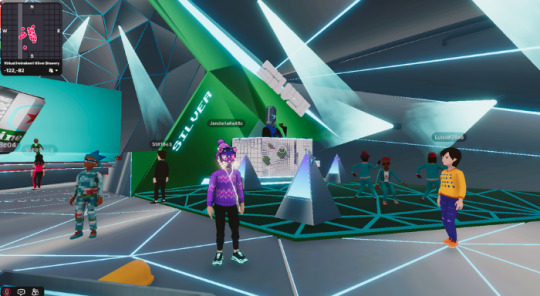
According to a Markets and Markets report (2023), the AR and VR display market is projected to grow from $1.8 billion in 2023 to $8.2 billion by 2028, with a compound annual growth rate (CAGR) of 35.6% (Zeng et al., 2023).
Several key factors have driven AR’s transition from a secondary technology to an essential digital tool:
Simplicity and Accessibility: Anyone can use AR filters with just a swipe. This ease of use has made AR an integral part of our digital lives.
Social Media Dominance: Instagram has 2 billion users, with 46% having used AR filters (Dixon, 2024). More than 500 million people use Instagram Stories daily, and across Meta’s platforms, 800 million people engage with AR monthly (PHONG VÂN, 2017). These figures confirm that AR filters are not just a fleeting trend but a core aspect of online interaction.
Impact on Social Perception: In an era where personal image is paramount, AR filters help users feel more confident in their online presence. A filter-free photo can sometimes be more surprising than one with a filter—an indication that AR has become a new standard in digital communication.
VII. Conclusion: AR – The Technology of Today and the Future
From Ivan Sutherland’s rudimentary headset in the 1960s to the seamless filters of Instagram and TikTok today, AR has undergone a remarkable journey.
Once a technological novelty, AR has now become an essential part of how we entertain ourselves, connect with others, and express our identities. As technology continues to evolve, who knows where AR will take us next? Perhaps filters that understand emotions or fully immersive virtual worlds.
But one thing is certain: AR has moved beyond being just a feature—it has become an integral part of our digital lives.
References
Adobe. (2022). What is augmented reality. Adobe.com. https://helpx.adobe.com/vn_vi/aero/using/what-is-augmented-reality.html
Azuma, R. T. (1997). A survey of augmented reality. Presence: Teleoperators and Virtual Environments, 6(4), 355–385. https://doi.org/10.1162/pres.1997.6.4.355
Burnell, K., Kurup, A. R., & Underwood, M. K. (2021). Snapchat lenses and body image concerns. New Media & Society, 24(9), 146144482199303. https://doi.org/10.1177/1461444821993038
Dixon, S. J. (2024, April 24). Instagram - statistics & facts. Statista. https://www.statista.com/topics/1882/instagram/#topicOverview
Johnson, P. (2024, March 11). Using augmented reality in social media to improve customer engagement. Rock Paper Reality. https://rockpaperreality.com/insights/ar-use-cases/using-augmented-reality-in-social-media-to-improve-customer-engagement/
Liu, J. (n.d.). History exhibit. Courses.cs.washington.edu. https://courses.cs.washington.edu/courses/cse490h1/19wi/exhibit/ar-tech.html
News, V. (2019). Ám ảnh về bề ngoài phải ưa nhìn, trung quốc đưa cả hiệu ứng làm đẹp vào ứng dụng thanh toán. VietNamNet News; Vietnamnet.vn. https://vietnamnet.vn/am-anh-ve-be-ngoai-phai-ua-nhin-trung-quoc-dua-ca-hieu-ung-lam-dep-vao-ung-dung-thanh-toan-i33775.html
PHONG VÂN. (2017, April 19). Ứng dụng facebook có công nghệ tăng cường-thực tế AR. TUOI TRE ONLINE; tuoitre.vn. https://tuoitre.vn/nhip-song-so/ung-dung-facebook-co-cong-nghe-tang-cuongthuc-te-ar-1300632.htm
The brief history of social media augmented reality filters. (n.d.). INDE - the World Leader in Augmented Reality. https://www.indestry.com/blog/the-brief-history-of-social-media-ar-filters
Thompson, R. M., & Jenny, S. E. (2016). Pokémon go: Encouraging recreation through augmented reality gaming. 12(2), 112–122. https://www.researchgate.net/publication/359706480_Pokemon_Go_Encouraging_recreation_through_augmented_reality_gaming
Wagner, D., & Schmalstieg, D. (n.d.). First steps towards handheld augmented reality. Seventh IEEE International Symposium on Wearable Computers, 2003. Proceedings. https://doi.org/10.1109/iswc.2003.1241402
Zeng, J.-Y., Xing, Y., & Jin, C.-H. (2023). The impact of vr/ar-based consumers’ brand experience on consumer–brand relationships. Sustainability, 15(9), 7278. https://doi.org/10.3390/su15097278
1 note
·
View note
Text
Is blogging still relevant in the age of TikToks and Instagram?
MDA20009 Digital Communities │ Week 4
Blogging, what even is that? For some, especially Gen Z, it might sound like a relic of the past (around the early 2000s?), where people spilt their thoughts in long-form posts instead of short clips, something our millennial friends (Gen X) were into back in the day. Or maybe it just feels a little… outdated?

To answer the question of what a blog is, it's simply a kind of website that is updated frequently and offers information on a particular subject. When blogs first came into existence, they were essentially just online diaries where users could record entries about their everyday activities. Since then, they have changed and evolved into a vital platform for information sharing and updates between individuals and companies. It's a great place to get information, insight, and practical guidance (Weiner 2024).
So now for the main question, "Is blogging still relevant in the age of Tiktok and Instagram?". Well, it depends.
Okay, let's all admit to the fact that attention spans nowadays are shorter than ever. We're all guilty of endlessly scrolling through TikTok or Instagram, trapped in the algorithm dishing out entertainment that doesn't require too much brainpower to comprehend. It's an integral part of our lives now. It's easy to assume that blogging might have lost its spark in this fast-paced, dopamine-driven world (I can't believe I thought of that).

Or so we thought...
The reality is that blogs are different because they're not designed for instant satisfaction. Instead, I feel like they offer depth in certain aspects. I feel like blogs allow for distinction, context, and a real understanding of a topic. It's where people can go to slow down and dive deep into topics or issues they're curious about. And that's where the value lies. Sure, you're not going to get that viral moment with a blog like how you would on Tiktok or Instagram, but that's kind of the point, no?
When people want a quick laugh or to catch up on the latest trend, they head to TikTok. But when they're looking for something more significant, like detailed information, how-tos, or even just a good, thought-provoking read, people are turning to blogs. But, Instagram is also a form of blogging platform as it also started alongside the blogging era (Corrine 2021). Some people still use it in the same style as a blog but that appeared to not work out well because Instagram does not allow clickable links in captions. Although you can say something like "link in bio," it is not the same as actually clicking on the link (Corrine 2021).
Community
TikTok and Instagram are great for instant interaction. Sure, one will always find their community through these 2 famous social media platform. Because the materials on these platforms is easily shared and frequently becomes viral, communities can grow rapidly. But the connection often feels fleeting, just temporary (Lang 2023).
Blogging, on the other hand, builds a sense of community in a different way. People visit blogs because they're invested in the content, and that naturally creates a more engaged, loyal audience. It's less about trends and more about shared interests. The readers who visit these blogs often return because they feel a deeper connection to the content creator and the discussions being had.
From the way I look at it, I think it's a 50/50 split because not everybody is a blog enthusiast. For some users, TikTok and Instagram offer a quicker, more visually stimulating experience. Others, on the other hand, who value detailed information and enduring knowledge will favour blogs. Every platform has a specific function, and the "best" community will vary depending on the level of community interaction one is seeking.
Searchability
Now let's divert the question to searchability. We can't deny that blogs might come up first rather than a Tiktok video or Instagram reel when one types in questions like "budget-friendly laptop for students" or "recipes for broke uni students" into a search engine.
Although, based on my experience, blogs may be very useful for some when it comes to searches like that, especially like recipes, or product reviews that need more than 1 minute where the reader might want a detailed breakdown or comparison, like, for example, comparing the specs of an iPhone 16 with the Google Pixel 9. However, when it comes to being a person like me that needs quick visual demonstration going back to that short attention span thing (because somehow i can't visualise instructions by reading), then that's where Tiktok and Instagram might come in handy. I'm sure many from my generation would agree to this and appreciate that 30 second Tiktok tutorial because we want something quick. So, it all comes down to a person's preference in the end.
So,
At the end of the day, blogs provide depth and lasting value that TikTok and Instagram lack in a sense. So, rather than competing, they actually complement each other. These days, the main goals of blogs should be to provide insightful content and resolve readers' issues (Corrine 2021). Despite its seeming old-school, blogging is nevertheless still booming.

List of references
Weiner, A. (2024, July 16). What is a blog? Definition, types, benefits and why you need one. Wix Blog. https://www.wix.com/blog/what-is-a-blog
Corinne. (2024, June 12). Is blogging dead? The rise of Instagram and TikTok. Skinnedcartree. https://skinnedcartree.com/2021/04/is-blogging-dead-the-rise-of-instagram-and-tiktok.html
Lang, K. (2023, August 30). What Does it Mean to Build a Community on Social Media? (And Why You Should). Buffer: All-you-need Social Media Toolkit for Small Businesses. https://buffer.com/resources/social-media-community/
3 notes
·
View notes
Text
The Future of Blogging: How to Stand Out In the Age of Social Media
#MDA20009 #Week4
Is blogging still relevant in the age of TikToks and Instagram?
TikTok and Instagram have become increasingly popular in recent years, and many people wonder if blogging is still relevant in the age of these short-form video platforms. the answer is yes, blogging is still relevant, but it has evolved in recent years to meet the changing needs of audiences (AIContentfy 2023).
Blogging is still relevant as it has many benefits such as, firstly, Reaching a Wider Audience. This is because blogging can be indexed by search engines, which means that people can find your blog posts when they search for relevant topics (Zimha & Gasparyan 2021). This means that you can reach a wider audience than you could with social media alone.
Secondly, blogging Builds Authority and Expertise, meaning, when you regularly publish high-quality blog posts on a specific topic, you establish yourself as an expert in that field. This can help you attract clients, customers, or other opportunities (Schmidt 2007).
Thirdly, blogging Drives Traffic to Your Website, if you have a website, you can use your blog to drive traffic to it. This can help you to increase your website's visibility and search engine making (Hans et.al 2021).
Lastly, blogging Generates Leads and Sales, you may use blog to generate leads and sales by promoting your products or services in your blog to generate leads and sales by promoting your products or services in your blog posts. You can also use your blog to collect email addresses from your readers, which you can then use to send them marketing emails (Swieczak & Lukowski 2016).
Despite all the benefits of blogging, to blog successfully in the age of TikTok and Instagram, you need to focus on creating high-quality, long-form content that is informative and engaging. It is important to also make sure to promote the blog posts on social media to reach a wider audience (Shahbaznezhad, Dolan & Rashidirad 2022).
Some tips for blogging successfully in the age of TikTok and Instagram includes the following, first, Choosing a Niche. Choosing a niche that you are passionate about and that you have some expertise in, this will make it easier for to write high-quality content that your readers will find valuable (Chukwuemeka 2023).
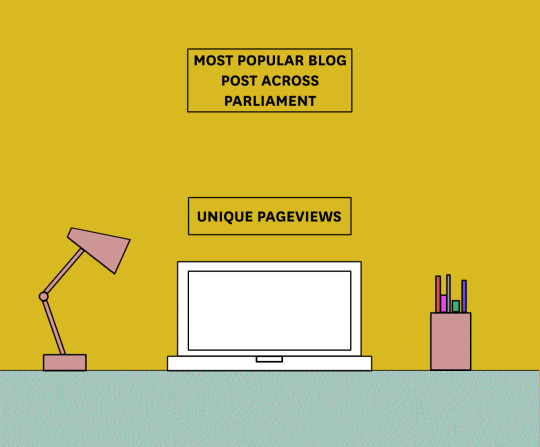
Second, Writing in a Long-Form Content, long-form content is more likely to be indexed by by search engines and to rank higher in search results. it is also more likely to engage your readers and keep them coming back for more (Voorveld et.al 2018).

Third, it is important to Promote Your Blog Posts on Social Media, sharing your blog posts on social media to reach a wider audience and be sure to use relevant hashtags and to tag other users who might be interested in your content (Gale 2021).

Lastly, Use Images and Videos, using images and videos can make your blog posts more visually appealing and engaging and be sure to use high-quality images and videos that are relevant to your topic. When choosing images and videos for your blog posts be sure to use relevant topics and avoid using stock photos and videos that do not have anything to do with your topic. Also, be sure to give credit to the creators of any images or videos that you have used.

Once you have a blog set up, you can start writing and publishing blog posts. it is important to choose interesting topics that the target audience will care about. It is also important to do research and make sure your content is accurate and up-to-date. Write in a clear and concise style and use images and videos to break up your text and make your posts more visually appealing. Proofread your posts carefully before publishing them.
In conclusion, blogging is still relevant in the age of TikTok and Instagram, but it has evolved in recent years to make the changing needs of audiences. To blog successfully, you need to focus on creating high-quality, long-form content that is informative and engaging. You should also make sure to provide your blog posts on social media to reach a wider audience.
List of References
AIContentfy 2023, The impact of social media, AIContentfy, viewed 29 September 2023, <https://aicontentfy.com/en/blog/impact-of-social-media-on-blogging>.
Chukwuemeka, ES 2023, ‘How to choose a blog niche: 6 effective tips’, Tech Updates, 12 March, viewed 30 September 2023, <https://bscholarly.com/how-to-choose-a-blog-niche/>.
Gale 2021, Social media topic overview, Gale, viewed 30 September 2023, <https://www.gale.com/open-access/social-media>.
Hans, S, Maqsad, S, Swami, AN & Kumar, A 2021, ‘A systematic review of blogging: Opportunities and challenges’, International Journal of Scientific Research in Computer Science Engineering and Information Technology, vol. 7, no. 3, viewed 30 September 2023, <https://www.researchgate.net/publication/351725158_A_Systematic_Review_of_Blogging_Opportunities_and_Challenges>.
Schmidt, J 2007, ‘Blogging practices: An analytical framework’, Journal of Computer-Meditated Communication, vol, 12, no. 4, viewed 30 September 2023, <https://academic.oup.com/jcmc/article/12/4/1409/4583037>.
Shahbaznezhad, H, Dolan, R & Rashidirad, M 2022, ‘The role of social media content format and platforms in users’ engagement behavior’, Journal of Interactive Marketing, vol. 53, no. 1, viewed 30 September 2023, <https://journals.sagepub.com/doi/full/10.1016/j.intmar.2020.05.001>.
Swieczak, W & Lukowski, W 2016, ‘Lead generation strategy as a multichannel mechanism of growth of a modern enterprise’, MINIB, vol. 21, no. 3, viewed 30 September 2023, <https://www.researchgate.net/publication/311575642_Lead_generation_strategy_as_a_multichannel_mechanism_of_growth_of_a_modern_enterprise>.
Voorveld, HA, Noort, GN, Muntinga, DA & Bronner, F 2018, Journal of Advertising, vol. 47, no. 1, viewed 30 September 2023, <https://www.tandfonline.com/doi/full/10.1080/00913367.2017.1405754>.
Zimha, O & Gasparyam, AY 2021, ‘Social media platforms: a primer for researchers’, Reumatologia, vol. 59, no. 2, viewed 30 September 2023, <https://www.ncbi.nlm.nih.gov/pmc/articles/PMC8103414/>.
#MDA20009#Week4#Blogging#contentmarketing#socialmedia#Digitalmarketing#Marketing#Business#Entrepreneur
3 notes
·
View notes
Text
Social Media's Double-Edged Sword: Harassment and the Potential for Positive Change
Week 10 Submission for MDA20009 Class - Hanoi Campus
Social media platforms present a paradoxical challenge in their capacity to both facilitate harassment and foster positive social change. While offering opportunities for connection and discourse, these platforms often become breeding grounds for abuse, particularly targeting women and marginalized groups. Hence, this post will explore this dichotomy starting with the truth of online harassment and the possibility that social media in fact drives positive change, thus discovering ways for better Social Media Governance overall.
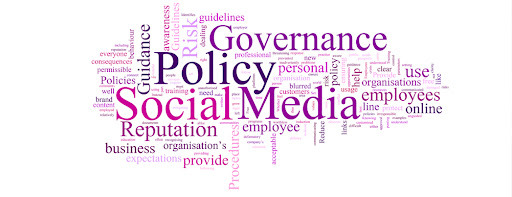
Several key insights in the situations on the internet and online public spheres
The pervasiveness of online harassment, particularly its gendered forms, poses a significant threat to the public sphere on social media. Research reveals that female and transgender students are disproportionately targeted by online harassment, often leading to self-censorship and disengagement from digital spaces (Haslop et al., 2021). Thus, this chilling effect undermines their digital citizenship and contributes to a gendered digital divide.
Notably, Haslop et al. (2021) also indicate that unsolicited sexual images, or “dick pics”, are perceived as commonplace, highlighting the normalization of such abuse. The insidious nature of online harassment is further compounded by the reluctance of victims to report incidents, often attributing it to the perceived lack of seriousness of online abuse or a misguided understanding of free speech
Social media's potential for positive change is exemplified by movements like #MeToo (Reinicke 2022). While earlier feminist online activist movements existed, #MeToo gained unprecedented traction, empowering victims to share their experiences and demand accountability, thus demonstrating social media's ability to facilitate rapid information dissemination and connect individuals with shared experiences, contributing to this movement's success. Nevertheless, Reinickle (2022) argue that the effectiveness of social media activism remains debated, with some arguing that it might primarily encourage superficial engagement rather than sustained action.

Despite certain success, many internet activism movement were hindered by the lack of robust social media governance and digital citizenship education, which allowed harmful behaviors to persist and limited the movement's potential for widespread change
So, what can be done?
Ultimately, creating a better public sphere on social media necessitates addressing the root causes of online harassment, particularly harmful masculine norms. Thereby, Health (2018) suggests digital citizenship education by encouraging critical reflection and fostering a culture of bystander intervention, creating a more inclusive and respectful digital environment. While social media governance requires careful consideration to balance free speech with the protection of vulnerable users, promoting digital citizenship that prioritizes empathy, respect, and critical engagement is paramount in fostering a more equitable and democratic public sphere.
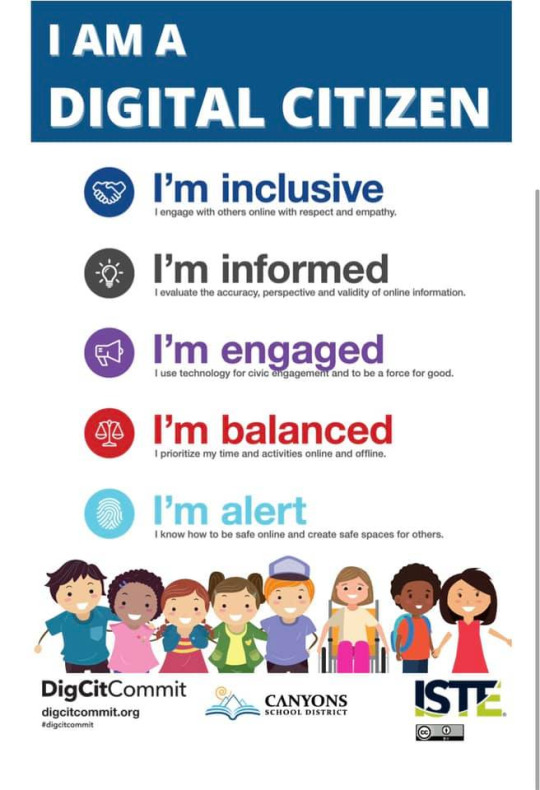
Reference List
Haslop, C., O’Rourke, F., & Southern, R. (2021). #NoSnowflakes: The toleration of harassment and an emergent gender-related digital divide, in a UK student online culture. Convergence, 27(5), 1418–1438.
Heath, M.K. (2018), "What kind of (digital) citizen? A between-studies analysis of research and teaching for democracy”,International Journal of Information and Learning Technology, Vol. 35 No. 5, pp. 342-356.
Reinicke, Kenneth (2022) Introduction. Men After #MeToo : Being an Ally in the Fight Against Sexual Harassment (Springer International Publishing)
0 notes
Text
Week 10: Behind the Screen: Victims of Malicious Keyboards
In the era of digital technology, people can connect with each other more easily than ever. Along with the undeniable conveniences, a dark side of the internet is also rising strongly: online harassment, especially racist behavior. Sadly, those who hide behind the screen choose to spread hatred instead of peace and understanding.

First, let's imagine a world where everyone loves and respects each other. Wouldn't that be great? But unfortunately, those are just distant dreams when millions of people still have to face cruel words, just because of their skin color or origin. Apparently, these harassers seem to have a magical ability: they know how to hate someone without meeting them.
These "keyboard warriors" often justify their behavior with absurd arguments such as "it's just a joke", "freedom of speech" or "I'm just telling the truth". In fact, if freedom of speech is understood as the right to spread venom everywhere, then perhaps this definition needs to be reconsidered. It is interesting to see how one person's freedom can become another person's horror.
In essence, online racism is like a toxic virus, spreading quickly and causing deep damage. Every negative word, every negative comment is an invisible knife stabbing at the victim's self-esteem, making them feel isolated and losing their self-worth. If harassers understood the power of words, perhaps they would think twice before pressing the "send" button.
Another equally ironic aspect is how society often ignores this issue. Social media platforms always pride themselves on smart algorithms and strict policies, but the reality shows a different picture. Discriminatory words are still rampant, while actions to stop them are slow and ineffective. Indeed, the invention of artificial intelligence technology does not mean the acquisition of emotional intelligence.
However, not everything is hopeless. The online community has also witnessed strong waves of protests from conscious users who are willing to stand up for justice and humanity. They are the real warriors in the fight against racism, constantly spreading positive messages and demanding justice for the victims.
In conclusion, online harassment related to racism is not just an individual problem but a common challenge for the whole society. Each of us has a responsibility to create a safe and healthy online environment. Only when we truly understand and appreciate cultural diversity can humanity move closer to a truly peaceful and just world. Until then, keep satirizing and mocking these negative behaviors, because sometimes, satire is the only way to awaken conscience.
Reference list
Banaji, M.R., Fiske, S.T. and Massey, D.S. (2021). Systemic racism: Individuals and interactions, institutions and society. Cognitive Research: Principles and Implications, [online] 6(1). doi:https://doi.org/10.1186/s41235-021-00349-3.
Bliuc, A.-M., Jakubowicz, A. and Dunn, K. (2019). Racism in a networked world: how groups and individuals spread racist hate online. [online] The Conversation. Available at: https://theconversation.com/racism-in-a-networked-world-how-groups-and-individuals-spread-racist-hate-online-109072.
Frueh, S. (2022). The Far-Reaching Impacts of Racism and Bias. [online] Nationalacademies.org. Available at: https://www.nationalacademies.org/news/2020/12/the-far-reaching-impacts-of-racism-and-bias.
Kornegay, S. (2021). Online Racism Leads to Real-World Mental Health Challenges. [online] UCONN. Available at: https://education.uconn.edu/2021/02/25/for-students-of-color-online-racism-leads-to-real-world-mental-health-challenges/.
#mda20009
0 notes
Text
Week 9: Digital Citizenship and Software Literacy: Instagram Filters
Hi fellow friends! Have you ever opened Instagram, scrolled through Story filters, and found filters that slimmed your jaw, brightened your eyes, and smoothen your skin to glossy porcelain, and thought about, “Why do I look prettier on Instagram?”. We all rely on beauty filters in our daily lives. It’s not just about beautifying your face; they actually redesigned it. People do not even notice it’s happening, and that’s what makes them so powerful.

With over 500 million daily Instagram Stories users, filters have become the norm for online self-presentation. Augmented Reality(AR) filters are not just for fun anymore, they have silently grown into a cultural mirror, reflecting and reinforcing an extremely particular and typically unachievable ideal of beauty. The so-called “Instagram Face” is now a thing: a perfect, ambiguously ethnic, almost AI-like combination of characteristics that appears “natural”, but is far from it (Haines 2021). It’s the result of ambient, subtly edited footage that gives you the impression that you’re still you, just better. But the term “better” version comes with a cost. But what happens when you switch back to your original camera? You might feel something wrong with your face. That is not a coincidence, that’s design.
There is a reason why we’re discussing this in the context of digital citizenship and software literacy. Let’s just be honest, when filters become so commonplace that your own natural face feels strange, it’s not just about beauty. It’s all about power, control, identity, and mental wellness; it’s about how apps influence us while claiming to help us.

Snapchat dysmorphia is a term created to describe what we’re experiencing nowadays. People used to bring photos of celebrities to cosmetic surgeons, now they bring filtered selfies of themselves (Migala 2025). Studies show that more frequent usage of beautifying filters selfies is associated with higher body image problems, particularly among young people. What about the gender divide? Oh, this is real. Guys typically use filters for memes and jokes. Meanwhile girls “expected” to appear cute, faultless, and filter-polished. Even 10-year-olds understand how to perform beauty online.

But, just maybe, there is space to push back. Some people see filters as an opportunity to experiment, challenge binaries, and play with identity. This relates to cyberfeminist theory - Donna Haraway’s cyborg vibes, in which technology can be used for liberation (Haraway 2017). But it isn’t the norm, is it? Most filters simply duplicate the same Western, sleek, white-coded beauty ideal, only now it’s ambient. Filtered to appear natural. Fake, but believable. Real, but only because we have forgotten what it looks like.
You are not a filter. You are not a brand. You are not a glitch.
YOU are YOU. And this is enough.
#MDA20009 #DigitalCitizenship #InstagramFilters #filter #unfilteredselfies
Haraway, D 2017, Key Thinker: Donna Haraway - Rethinking Political Thinkers Resources - Oxford Learning Link, Oup.com, viewed 10 June 2025, https://learninglink.oup.com/access/content/ramgotra-choat1e-resources/ramgotra-choat1e-key-thinker-donna-haraway#:~:text=Haraway%20argues%20that%20the%20fusion,for%20technological%20progress%20(see%2038.2..
Haines, A 2021, From ‘Instagram Face’ To ‘Snapchat Dysmorphia’: How Beauty Filters Are Changing The Way We See Ourselves, Forbes, viewed 9 June 2025, <https://www.forbes.com/sites/annahaines/2021/04/27/from-instagram-face-to-snapchat-dysmorphia-how-beauty-filters-are-changing-the-way-we-see-ourselves/>.
Migala, J 2025, What Is ‘Snapchat Dysmorphia’? A Detailed Look at the Trend, EverydayHealth.com, viewed 9 June 2025, <https://www.everydayhealth.com/wellness/united-states-of-stress/what-snapchat-dysmorphia-detailed-look-trend/>.
0 notes
Text
MDA20009 Digital Communities Fifth Blog post week 9
Topic:
Finding My Place in a Fandom: A Journey of my Community and Connection
Hey everyone! Super excited to share my story with you all again! So, today’s topic is all about fandoms. Honestly, I used to be the type of person who wasn’t into any of that—no fan groups, no following fan pages, none of it. But, as they say, time changes people, and here I am now, fully embracing the fandom life!

Discovering the Fandom Community
So It started with a single interest, a piano piece compose by Chopin that caught my attention and slowly grew into it more the I aspect. Suddenly, I was part of something bigger, an online community is a Instagram page of people who shared my fascination, my theories, and sometimes even my strange sense of humour, my behaviour captures the essence of fandom: a community driven by intense enthusiasm that interacts with society, shaping new cultural meanings and values through shared social experiences (Fuschillo, 2018). Now I realise that Fandoms have this unique way of turning all people who have same interest into friends, and for many of us, they become spaces that offer acceptance, understanding, and an endless source of connection.
Why I Feels Like Home in the fandom communities

My Fandoms communities often feel like a home away from home. They’re places where you can express excitement without judgment I mean sometimes, We share our quirky, unpopular opinions and crack up over inside jokes that only fellow fans would get. For instance, we speculate: if Chopin, the legendary piano composer, had lived longer or if Poland hadn’t been invasion by imperial Russia, would his musical style have evolved differently? Would some of his iconic pieces even exist if history had taken a different turn? It’s all part of the fun! I found myself surrounded by people who saw the little details and appreciated them as much as I did. Being in a fandom meant finding a group of people who not only enjoyed the same things I did but understood why I cared so deeply about certain things.
This sense of connection goes beyond just shared interests. Fandoms can offer a unique type of support. If I posted a question, I’d get responses from fans who wanted to help, offer insight, or just share in my curiosity. In those moments of excitement, when someone shares a piece they’ve just discovered, I feel thrilled to explore something new along with them. And whenever someone learns a new piece and posts it on the page, I share in their happiness because I know firsthand the effort and dedication it takes to practice and improve.
Finding My Voice ( My Species )
One of the best parts about joining a fandom has been discovering ways to contribute. Watching others create fan art, write fanfiction, or discuss music theories really sparked my own creativity. Whether it was doodling, writing, or making memes, I felt inspired to join in on this collaborative, creative space. Even though I don’t often post my own content, I find myself quietly enjoying and appreciating everyone else’s work. It’s funny, but despite not engaging much, just liking and sharing posts makes me feel connected and part of the fandom community in a meaningful way.

A World Without Borders
Another remarkable thing about fandoms is how they bring people together from all around the globe. I’ve connected with fans from different countries, backgrounds, and life experiences, learning from perspectives I wouldn’t otherwise encounter. And because our bond is rooted in a shared passion, the usual social barriers seem to fade. Whether a friend is from across the street or across the ocean, our shared fandom makes us feel close.
This is also thanks to the development of social platforms that provide convenience, The growth of social media encourages fan culture to become a participatory culture, changing roles and actively impacting society and the economy (Jia, Li & Ma 2021).

Conclusion
In the end, being part of a fandom has taught me the true power of connection. I used to feel hesitant about identifying as a “fan” of anything, but now I see that fandom goes far beyond pop culture or celebrity followings like K-pop or pop music. Fandom can encompass a love for classical music, historical figures, or anything else that sparks a passion. I have a deep respect for all types of fandoms, and I truly admire anyone who has found a community they can call their own.
Thanks for reading, and I hope you enjoyed diving into the world of fandoms with me! Keep exploring, creating, and sharing what you love, because fandoms are all about building connections and celebrating our passions. Until we meet again—see you all !!
Reference
Fuschillo, G 2018, ‘Fans, fandoms, or fanaticism?’, Journal of Consumer Culture, vol. 20, no. 3, pp. 347–365.
Jia, B, Li, J & Ma, J 2021, ‘Transformation of Fan Culture Under the Influence of Social Media’, www.atlantis-press.com, Atlantis Press, pp. 2173–2178, viewed <https://www.atlantis-press.com/proceedings/ichess-21/125967353>.
0 notes
Text


WEEK 6 | Digital Citizenship, Hashtag Publics, Political Engagement and Activism
Okay so here we are, for today’s topic we will be uncovering the contents of Digital Citizenship, Hashtag Publics, political Engagement and Activism. Have y’all ever heard of the term Digital Citizenship? It may seem like a fancy wording for having rights to the media but the denotation behind the word simply refers to the responsible and ethical use of technology by individuals when engaging in digital environments. Digital Citizenship includes rights, access, identity and behaviour in digital spaces, shaped by education, access to technology, and sociopolitical structures.
Another key aspect that can be found correlating to the playground of digital citizenship you tend to encounter on social media is the Hashtag Publics right? Every moment you scroll through your feed, you're always wondering why do users of the net put hashtags onto their posts? The purpose of hashtags is to serve awareness regarding a cause or a discourse circulating online pertaining to the public. For instance, back in 2018 the #MeToo movement was at the height of their activism; it became globalized across the world and the internet whereas everyone became highly aware of the social movement. According to ( Jaeger, 2021 ), by stumbling upon specific Hashtag-based communities on Twitter, Tiktok, and Instagram give netizens a chance to formulate collective identities around certain causes. If you literally were to set your eyes on critical hashtags such as #StopAsianHate #BLM, these hashtags literally provide you a space of resonating with the political movement in the first place.
Now onto Political Engagement and activism, In the current era we are living in, the technology surrounding our environment completely reshapes the way everyone access political information, engage with political figures and organize collective actions for a good cause. This part is a bit sensitive so please read this section at your discretion.
An example I can provide here, is the ongoing war occurring in Gaza. Despite the ongoing conflict occurring for a long period of time, during those moments it actually provided Palestinians and their supporters to bypass orthodox media gatekeepers. In a additional manner, this action allows for real-time sharing of firsthand accounts, images, and videos deriving from the conflict zone stemming from their social media platforms. This democratization of information has shifted the narrative, offering a more nuanced perspective of the situation in Gaza. In another aspect that have utilized Digital Citizenship is calling onto political figures in the media to remind them of their duties.
To conclude this post on a decent note, Digital Citizenship plays a critical role in reminding everyone on social media or attaining any ownership of technology to exercise their rights and duty in the media.
References:
Jæger, B. (2021). Digital Citizenship – A Review of the Academic Literature. Online-First, 14(1-2021), 1–XXI. https://doi.org/10.3224/dms.v14i1.09
Ashkar, A. (2024, October 25). Social Media’s Key Role in Palestinian Activism for Gaza. Modern Diplomacy. https://moderndiplomacy.eu/2024/10/25/social-medias-key-role-in-palestinian-activism-for-gaza/
Tynes, N. (2021). How digital activism is putting the spotlight on Palestine. The New Arab. https://www.newarab.com/analysis/how-digital-activism-putting-spotlight-palestine #MDA20009 #DigitalCitizenship #Politicalengagement
0 notes
Text
WEEK 9: Digital Citizenship in Indie Game Communities

Digital citizenship highlights how independent game communities foster unique spaces for creativity and social connection, especially within local scenes. For example, the Melbourne indie game scene offers a supportive network for developers, from students and hobbyists to experienced designers, allowing them to connect, collaborate, and grow. These communities, which organize events like Melbourne International Games Week (MIGW) and support spaces like The Arcade, provide resources and foster a collaborative culture among indie developers (Keogh, 2021)(Keogh 2021 MDA20009 Mel…).
A core part of digital citizenship in indie gaming is how these communities support cultural diversity and the expression of unique, non-commercialized ideas. Indie developers often prioritize creative storytelling and unique gameplay over profit-driven production. Melbourne’s Bar SK, for instance, is known for showcasing “trash games and media art,” an alternative form of gaming expression that challenges mainstream industry norms. These environments create a cultural field where indie developers experiment with new concepts without the constraints of major studio expectations(Keogh 2021 MDA20009 Mel…).
Digital citizenship within indie game communities also means fostering inclusivity. As observed in Melbourne’s indie scene, social events like IGDA meetups or Freeplay festivals create spaces where participants can openly discuss game design, cultural representation, and diversity in the industry. This inclusion encourages developers to make games that resonate with a variety of audiences and promote narratives beyond the traditional gaming storylines.
Ultimately, indie game communities embody digital citizenship by cultivating spaces for creativity, collaboration, and inclusivity. They are more than just production hubs—they are cultural fields that shape how games are made, shared, and enjoyed. This supportive network enables developers to push boundaries, innovate, and create unique gaming experiences.
References:
Keogh, B. (2020). The Melbourne indie game scenes. Routledge EBooks, 209–222. https://doi.org/10.4324/9780367336219-18
T. L. Taylor. (2018). Terms and Conditions of Use | About JSTOR. About JSTOR. https://about.jstor.org/terms
0 notes